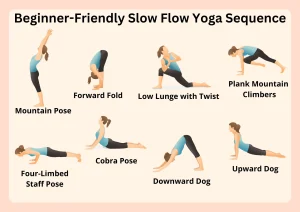The Effects of Yoga on Balance and Fall Risk in Older Adults – A Systematic Review

Falls are one of the leading causes of injury among older adults and can result in disability, morbidity and decreased life expectancy. Yoga has proven itself as an affordable, safe exercise that can improve balance and reduce fall risk.
This systematic review and meta-analysis included randomized controlled trials where sedentary older adults were randomly allocated either yoga or health education as their treatment approach, then assessed at baseline and 10-weeks using physical performance measures and self-report outcomes.
Strength
As people age, muscle strength and flexibility decrease. This can make maintaining balance more difficult if affected by specific conditions like diabetes or Parkinson’s disease or taking medications that may cause dizziness, drowsiness or drops in blood pressure.
One study demonstrated that participants engaging in yoga outscored participants of an active control group on tests measuring both right leg static balance and lower body flexibility. Other research suggests it may help increase thigh and hip strength.
Researchers conducted this systematic review by looking at studies comparing yoga with either inactive controls or active control groups, for outcomes like physical function and HRQoL that were measured objectively using questionnaires, tests or rating scales. A ‘vote counting’ approach was then employed for each outcome to establish statistically significant evidence that yoga improved them relative to controls while Hedges’ g was also taken into consideration when measuring effect sizes.
Flexibility
Although this study group is relatively small and heterogeneous, its results remain clear: yoga significantly improved balance, lower limb strength and flexibility compared with inactive controls; however no effect was seen in upper body flexibility, fall frequency, quality of life or vitality.
This study randomly assigned participants either a four-week yoga-based exercise program or an inactive control group. Outcomes were assessed using Tinetti Balance Assessment Tool, InBody 230 bioimpedance body composition analysis, and an SF-36 Health Survey questionnaire.
This study is remarkable in that it evaluated outcomes not directly related to falling, such as upper and lower limb strength, walking speed and quality of life. Furthermore, this was the first trial comparing yoga’s effects against active and inactive control groups in an older adult population without specific clinical conditions; an important finding because other exercise-based RCTs in older adults had not taken such factors into consideration when measuring physical function and health outcomes.
Stability
Yoga has been shown to improve balance, which is an integral component of fall risk. Not all forms of yoga provide equal results: research to date has focused primarily on Hatha yoga with postures and breathwork as its focus, while Kundalini or Yoga Nidra focus more on relaxation, mindfulness, and stress reduction.
Age can naturally reduce strength and balance, but many older adults also live with chronic conditions that aggravate it further, such as arthritis or diabetes. Furthermore, certain medications prescribed to older adults can cause dizziness and drowsiness which increases the risk of falls.
A recent randomized controlled trial concluded that yoga improved balance and quality of life in people without specific health conditions, suggesting it might be useful as part of physical activity guidelines for older adults. More research needs to be conducted into how different forms of yoga could benefit different health needs or goals.
Balance
Hatha yoga practitioners tend to report improved balance, yet its impact on fall risk has only recently been investigated in detail. The new findings could change that.
Researchers conducted an eight-week yoga training program designed to reduce fear of falling and improve balance in a residential care facility. Participants were divided into an intervention group who participated in two weekly classes of yoga compared with a control group who did not. Results demonstrated that participants in the intervention group experienced significant decreases in fear of falling and small yet significant improvements in balance, respectively.
A meta-analysis of 22 RCTs that evaluated physical function and HRQoL outcomes found yoga to be associated with significant improvements in balance (effect size [ES] = 0.64, 95% confidence interval 0.32 to 0.95, p 0.001), lower body flexibility and strength when compared to active controls. Additionally, depression scores, perceived mental health quality scores and sleep quality scores saw small yet significant improvements when compared with inactive controls.






